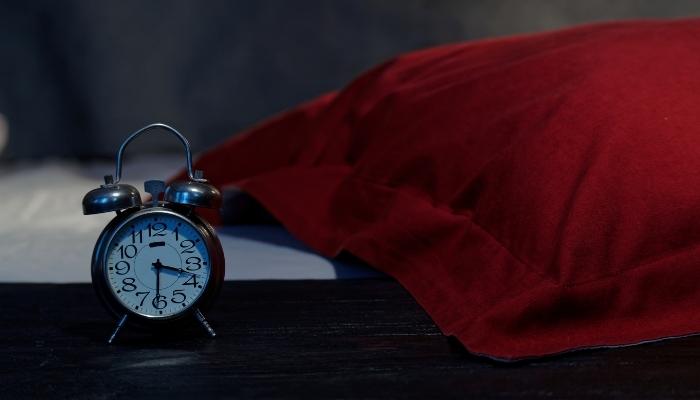We get it — you love your pillow. You finally have it broken just like you prefer it, so why would you ever replace it? Now, you usually wouldn't fix something that isn't broken, but that isn't the case with pillows. That's because pillows are a vital part of your sleep, so if you find yourself waking up with headaches or constant pain in your neck, your pillow might be to blame. It turns out that regularly replacing your pillows will boost your quality of sleep and your health, too. And the start of a new year is a perfect time to start!
Schedule Your Replacement

The experts say that you should replace your pillows every 1 to 2 years. But that doesn't account for the different pillow materials out there. Each material has a different life expectancy, so it's important to note which you have so you know when to replace them.
- Latex Pillows: replace every 2 to 4 years
- Memory Foam Pillows: replace every 2 to 3 years
- Polyfoam Pillows: replace every 2 to 3 years
- Down Pillows: replace every 1 to 2 years
- Polyester Pillows: replace every 6 months to 2 years
- Bamboo Pillows: replace every 2 to 3 years
- Feather Pillows: replace every 18 months to 3 years
- Buckwheat Pillows: replace every 3 years
Remember that these are just the basic guidelines. Knowing exactly when to replace your pillows depends on crucial signs.
Seeing the Signs

Speaking of signs, your pillows being a pain in the neck is just one of the many signaling when it's time to give your pillows the old heave-ho. Other signs include:
- Yellowing: the build-up of sweat, body oil, hair oil, drool, and other dirt seeps through your pillow over time and causes it to turn yellow (yuck!).
- Allergens: old pillows accumulate dust mites, fungus, mold, and pet dander, which can cause you to have a runny or stuffy nose, watery eyes, or breathing difficulties.
- Breakouts: all the grime in your pillows can cause your skin to have frequent breakouts
- Lumpy & Flat Surface: there isn't enough pillow fluffing for a flat and lumpy pillow to adequately support you, which contributes to sore muscles.
Pillows absorb everything while we sleep, so it's important to watch for these indications.
The Care & Maintenance of Pillows

Let's say you finally upgraded to new pillows, but now you're worried about keeping them nice for longer. How can you avoid the build-up of grime and other icky factors?
Every pillow type requires different care instructions:
- Memory Foam: DO NOT machine wash. Spot clean when necessary or thoroughly hand wash every 2 months with gentle detergent and let it air dry.
- Polyfoam: Spot clean or hand wash with gentle detergent every 2 to 3 months. Then be sure to air dry it.
- Down: Machine wash on gentle cycle with mild detergent and cold water every 3 to 6 months. Place it in the dryer on low heat to dry.
- Latex: Spot clean stains or hand wash with warm water and a mild detergent every 2 to 3 months. Make sure you don't submerge the pillow in water or wring it to dry. Lay it flat to dry.
- Buckwheat: DO NOT wash. Protect pillows with removable, washable covers and replace buckwheat hulls every 3 years.
- Feather: Machine wash in cold water on a gentle cycle with mild detergent every few months (or once a year). Put them in the dryer with dryer balls and keep drying until pillows are nice and fluffy.
- Polyester: Machine wash with warm water and mild detergent on a gentle cycle. You can choose to air dry or set in the dryer on low heat.
Pro Tip: Avoid using fabric softener, and remember to wash your pillowcases at least once a week!
Out with the Old — But How? Where?

How do you get rid of your old pillows? You can donate your pillows to animal shelters or wildlife non-profit organizations (pet beds are expensive!). Or you can choose to recycle or compost if you have suitable materials like feathers or down.
But if you're the type of person that can't bear to throw things away, even when you know it's long past time, there are other steps you can try to repurpose them.
- Seal out drafts and gaps in your home by creating a door stopper with old filling. You can even repurpose the pillowcase.
- About to move? Keep your old pillows handy to move breakables and prevent scratches and scuffs on your furniture.
- Reincarnate your pillows into floor or throw pillows. Find pre-made covers (or sew your own if you're feeling crafty) and stuff them with the old pillow stuffing!
- Have pets yourself? Create a makeshift pet bed with your old pillow and a ratty T-shirt. Your pets will feel even closer to you.
- Use them in the garden! Gardening is hard on the knees, so use old pillows wrapped in a waterproof casing or garbage bag.
- Wash them and give them to the kids to play with and build blanket forts!
Keep Your Sleep Sweet

Regular pillow upkeep is vital to keeping your sleep sweet. The right bed pillows help evenly support your body and keep your spine in alignment. But the most important factor for good sleep is your mattress! So, if you haven't upgraded your mattress in the last 10 years or if you just don't sleep well, it's time to go mattress shopping.
Have any questions about mattresses or pillows? Give our experts at Action Appliance a call! We'll help you find the best option for your sleep.